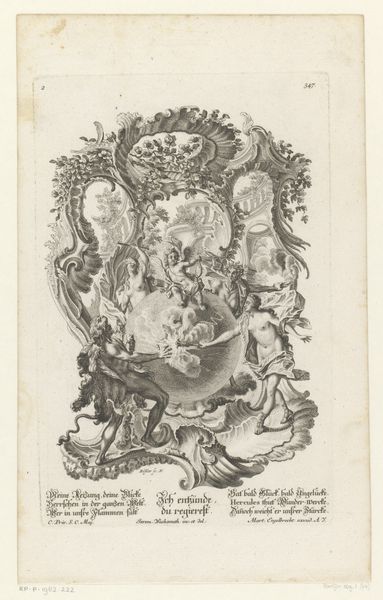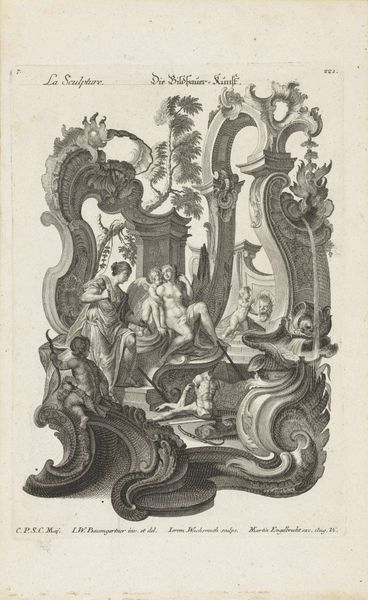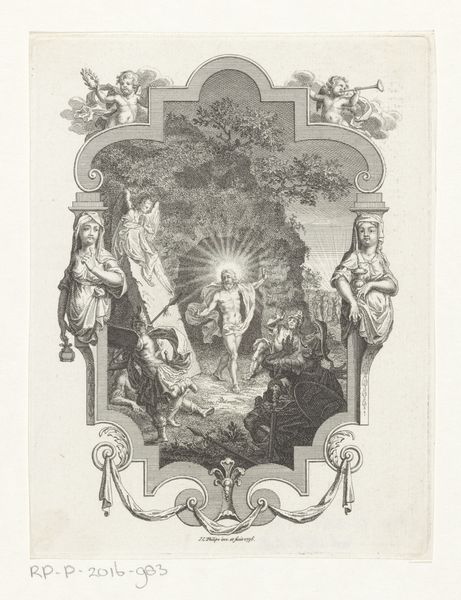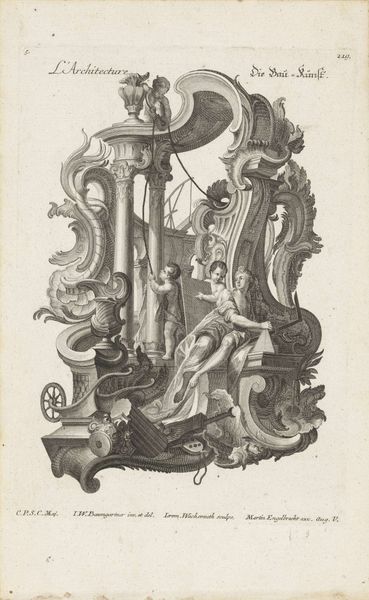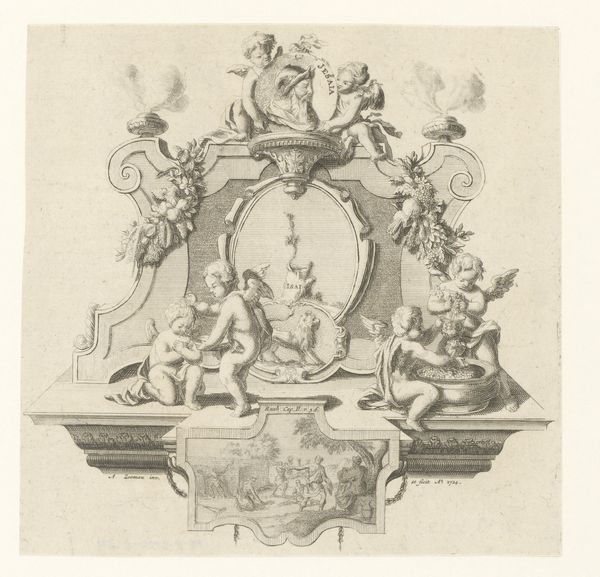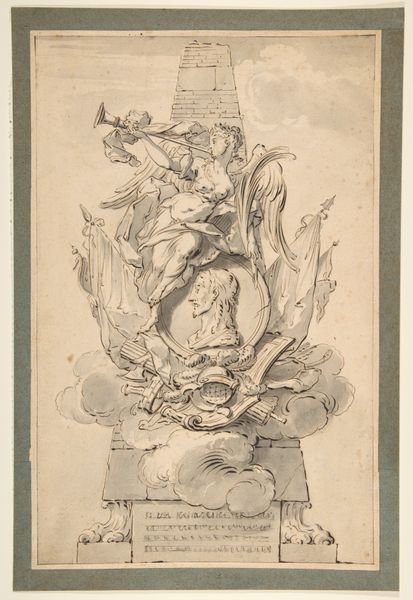
print, engraving
#
allegory
#
baroque
# print
#
pen sketch
#
pencil sketch
#
old engraving style
#
figuration
#
line
#
history-painting
#
engraving
Dimensions: height 322 mm, width 211 mm
Copyright: Rijks Museum: Open Domain
Balthasar Sigmund Setletzky created this print of Nero in the 18th century. Immediately, our eyes are drawn to Nero's theatrical pose, and the scene behind him. In the center of the print, we see Nero pointing towards the murder of his half-brother, Britannicus. Nero, adorned with a laurel wreath, embodies both artistic sensitivity and ruthless power, a dichotomy often explored in depictions of historical figures. Consider the recurring image of the tyrant throughout history. From ancient dramas to Shakespearean plays, the figure of the tyrant remains a potent symbol of unchecked ambition. The laurel wreath, a symbol of triumph and honor in ancient Rome, is here twisted into a signifier of vanity and corruption. The contrast of this symbol with the bloody scene it frames echoes the human psyche’s capacity for rationalizing brutal acts in the pursuit of power. How often have we seen this pattern repeat itself? A leader, adorned with symbols of legitimacy, orchestrating acts of violence, all while history watches and remembers. The image invites us to contemplate the cyclical nature of power and the echoes of history that resonate in our collective consciousness.
Comments
No comments
Be the first to comment and join the conversation on the ultimate creative platform.


